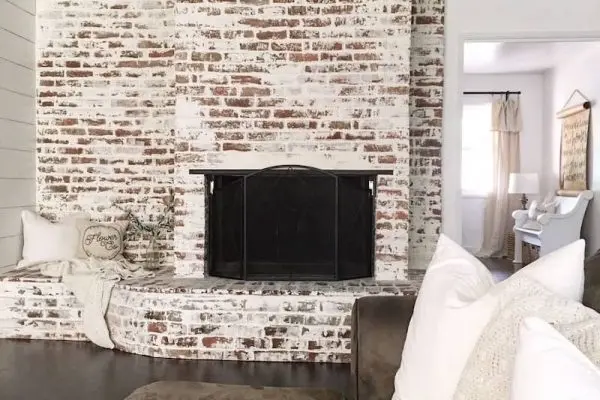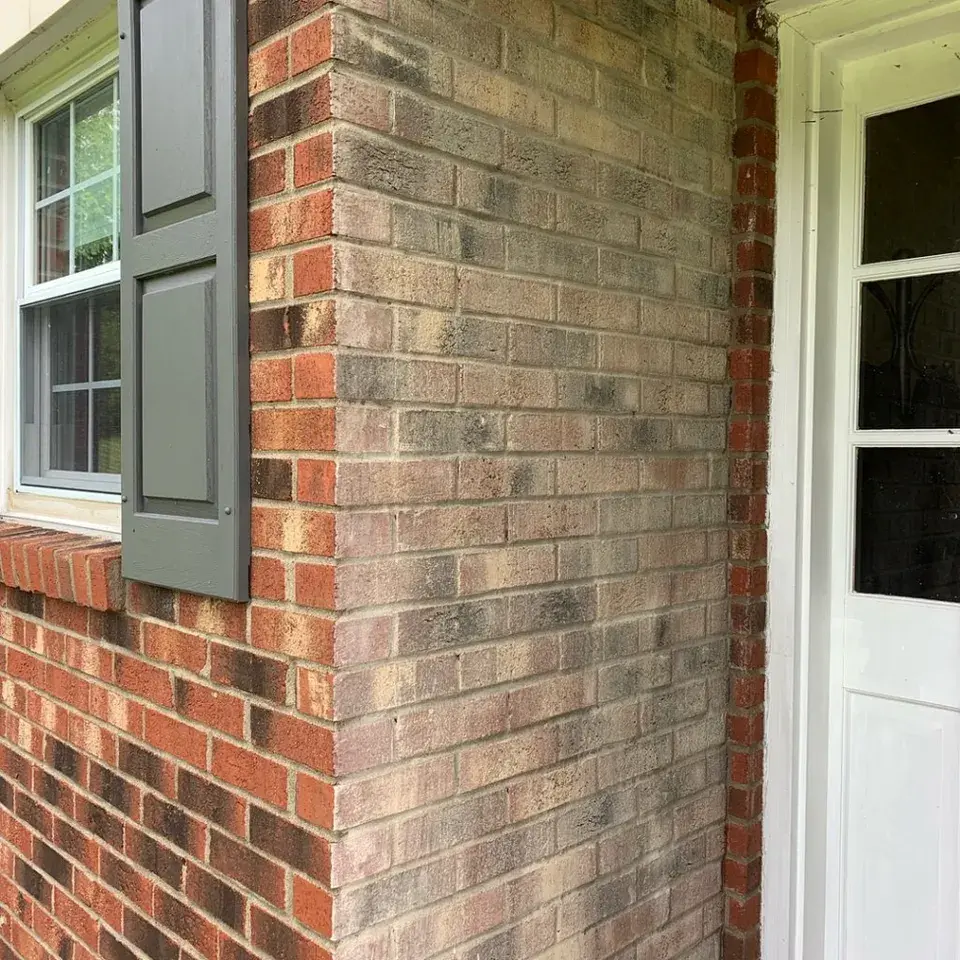The Complete Guide to Limewash
What every homeowner needs to know about bringing old-world charm to modern living and the top mistakes to avoid.
Limewash is a simple way to add a touch of sophistication to your home. It’s elegant, refined and reflects the roots of many people’s European heritage. The versatile and timeless look makes limewash a great investment for some homeowners, but not all homeowners.
But is limewash right for your home?
And is limewash the same as the popular German smear finish?
Read on to find out.
Why Trust Us? A&X Masonry is a top-rated masonry company in the Dallas, Texas area and has years of experience with German smear, limewash and similar techniques.
What is limewash anyway?
Limewash begins as raw limestone that is kiln fired (at approximately 900 degrees celsius). This process transforms the limestone into calcium oxide, also known as quicklime.
Manufacturers then mix the quicklime with water to create a stable powder known as hydrated lime. This final version is easily found in any hardware store and it’s the basis for limewash paint.

Is Limewash the Same as German smear?
Limewash and german smear are two different techniques and products with different outcomes.
Imagine you have a piece of toast. Limewash could be compared to a thin translucent spread of butter allowing you to see the toast and enhance the color. German smear is like unevenly spreading peanut butter on the same piece of toast allowing some of the toast to peek through.

This picture from Happily Ever After clearly illustrates the thick consistency of a true german smear.
In addition to the technique, the products used also differ slightly.
Limewash, as discussed above, is basically just limestone and water. German smear requires the right combination of sand, cement, and water. It’s permanent and easy to clean, unlike limewash. It’s also what’s responsible for the chunkier texture.
Thinking of getting the German smear look for your home or fireplace? If you’re in the Dallas area, contact us at A&X Masonry. We’re true artisans when it comes to applying German smear. You can quickly update the look of your fireplace, brick or stone exterior with this trending technique.

Visit our German smear page and Project Gallery to imagine the possibilities and see what we can do for you. Fill out the form at the bottom of the page to get a free estimate!
Where Can I Use Limewash?
You can apply limewash almost anywhere with the right preparation. It’s eco-friendly and it’s almost odorless thanks to no VOC’s (volatile organic compounds).
Indoors
You can use limewash on most indoor walls and ceilings. It’s ideal for plastered walls, brick, and cement. However, you can also limewash drywall but you’ll need at least one prep coat first if not more. The same goes for walls that have already been painted.

The interior possibilities of Limewash paint, thanks to Pure and Original.
Keep in mind that limewash will accentuate any defects due to poor drywall hanging or previous drywall repairs. You may need to consider getting your walls skim coated before attempting to use limewash.
Interestingly, limewash has a high pH level making it mold and bacteria resistant. This means you can use it in bathrooms, damp basements or other areas where high humidity exists.
Limewash is also safe for high heat areas like fireplaces. But, before starting, you should fix any cracks otherwise the limewash will magnify the defects. At A&X Masonry we can help you with any repairs to your brick or stone work before starting your limewash project.
If you’ll be using limewash in the kitchen, you may want to consider a top coat to avoid stains from food preparation. Keeping these things in mind can help you come up with a reasonable budget to complete your project.
Outdoors
Limewash is also a fairly durable option for exterior painting. Again it’s best for painting concrete brick, and stucco since those materials will absorb the limewash.

This photo from Grey Snail Press shows how thin limewash can be applied.
Over time it will fade slightly but, overall, many find that the fading simply adds to its beauty and patina.
Another advantage is when it’s time to refresh it since you don’t have to strip any paint off, you can just paint right over it. Plus, cleaning up is a breeze and it won’t harm groundwater.
If you have any extra limewash leftover you can also use it to give added uv protection to the trees around your property.
Furniture
Yes, you can even use limewash for some furniture. If you’re into upcycling, wood pieces that have been sanded are ideal since the limewash will absorb into the wood. You can also use limewash on new unfinished wood furniture.
Plastic and metal furniture are not recommended for limewash. This is because the limewash can’t be absorbed into these materials. The limewash basically just sits on top of the surface making it easy to scrape off.
Furniture painted with limewash has a charming chalky finish and is perfect for a vintage vibe. If you’re planning on painting heavily used furniture such as kitchen chairs or a coffee table, you may want to consider sealing them to avoid any permanent staining.

The Top Limewash Paint Products
We’ve composed a list of the top limewash paint companies according to consumers to help you get started. Limewash in general is a breathable non-toxic product and these companies don’t disappoint.
Each offers their own unique pallet of colors and price point. They also offer plenty of complementary products like coordinating base coats and top coats.
- Bauwerk Lime Paint.
- Pure and Original Fresco Lime Paint.
- Romabio Classic Limewash.
- Sydney Harbour Limewash.
- Domingue Architectural Finishes Limewash.
The average price for a gallon of limewash is between $50- $80. Pure and Original being on the higher end and Bauwerk being on the lower end of the price scale.
Price can also vary based on region and the types of mineral pigments used to create each company’s range of colors.
Pros and Cons of Limewash Paint
Pros
- Eco-friendly easy clean-up
- Low to no odor
- Limewash won’t peel or crack
- No stripping required when retouching
- Unique finish
Cons
- Can be more expensive
- 2-3 coats are often needed
- More frequent touch ups
- Limited color availability
- Sealers are recommended to increase durability
- A primer is required for some surfaces
Many customers underestimate the amount of limewash they’ll need to create the effect they’re going for. This is usually the biggest culprit when it comes to 3 and 4 star reviews.
Since limewash is thin, most companies do recommend several coats which means more work for you. Plus, compared to regular paint, you will probably need to touch it up more often. The amount of touch-up required depends on whether it’s an indoor project or outdoor one.
Indoors walls tend to get scuffed which requires paint touch-up to get rid of the marks. Limewash finishes shouldn’t be scrubbed, this makes them a little more high maintenance.
On exterior projects, the weather and sun slowly patina the limewash. A certain amount of patina looks great but too much can make a home look drab making homeowners want to refresh it.
One other caveat is how to layer colors. Since limewash can vary in opaqueness from translucent to completely opaque, the final look can vary greatly.
Suppose the brick you wish to limewash is dark red? What would be the best color choice? If I use white, will it look pink when I’m done? And how much product will I need if I’m looking for a drastic color change? You may want to get a professional painter’s opinion to help you set realistic expectations and make the best choice.
Where Can I Get Limewash?
You can purchase limewash in hardware stores and specialty paint stores. Some of the brands mentioned above feature online retail direct to consumers while others can notify you of a retailer near you.
Colors
While limewash does come in a variety of colors all are within a specific aesthetic. Pure & Original for example, features 200 color options. However, the variety pales in comparison to the plentiful options available in regular water or oil-based paints.
I’m On a Tight Budget, Can I Make My Own Limewash?
Yes, you can make your own limewash. As mentioned above, hydrated lime is cheap and can be found in most hardware stores. Mixing it with the right amount of water (some recipes include adding salt) sounds easy enough. But it can be tricky and the differences between DIY limewash and store-bought limewash don’t stop there.
Professional limewash is quality checked to make sure the lime has been ground evenly for the ideal finish, unlike regular hydrated lime.
Mixing colors can also be more difficult than you think. It’s easy to make mistakes from batch to batch. Also when it comes to retouching later, it will be challenging to achieve the same color.
If you don’t mind inconsistencies of this nature, then making your own will work. Limewash itself is very forgiving. Some artists deliberately mix varying shades to create a specific look. It all depends on what you want the final product to look like.
One final consideration…if you aren’t content with the basic white/gray look of the natural hydrated lime, the cost of the add-in mineral pigment can get pricey, making your “cheap” limewash just as expensive as pre-mixed varieties with a whole lot more hassle.
How Is Limewash Applied?
Limewash is not applied with a roller. Using a block brush or masonry paint brush is what will give the limewash its “classic old world” look with slight color variations.
Here are the top tips for application:
- Tape around areas you don’t want to paint
- Wet the surface
- Cut in as you go
- Work in 2 ft by 2 ft sections
- Keep a wet edge
- Brush strokes should be random and go in different directions
- Once you start, don’t stop until the first coat is completely finished
- Watch for paint runs and be quick to correct them
- Allow each coat to dry thoroughly before applying the next (you may need to wait anywhere from 6-8 hours in between coats) unless otherwise directed by the product specifications
In addition to these basic concepts, each limewash product will come with specific instructions, such as if any mixing with additional water is necessary per coat of application.
As mentioned earlier, each surface may require different steps to prep it for the limewash. Think ahead too, if your project will require a sealer such as in high-traffic areas or areas where algae and moss build-up are prone to occur.
How Do I Clean My Limewashed Walls?
Limewash projects generally need at least 7 days after the final coat to cure thoroughly. You shouldn’t try cleaning the surface before it’s fully cured.
You can clean limewash walls with water and a damp cloth. Just be sure to avoid scrubbing because it will damage the finish.
If scuffs and marks appear over time (let’s face it they usually do) you can paint over them with additional limewash, so definitely save some limewash paint for future touch-ups. Limewash paint that’s been opened will usually remain usable for up to two years.
And for high-traffic areas like kitchens, bathrooms and kid’s rooms, consider applying a mineral sealer to preserve the look you’ve worked hard to achieve. Each limewash paint company sells various types of sealers that are specifically made to work with their limewash.
Is Limewash Environmentally Friendly?
Limewash is very environmentally friendly; it has a short list of mostly natural ingredients. Because it doesn’t have any harsh chemicals, it’s low to almost no odor. Plus, it won’t contaminate your groundwater.
Limewash has natural anti-bacterial and anti-fungal properties. It breathes and acts as a natural air filter. These are all advantages for modern homes that tend to breed mold.
Limewash vs German Smear Recap
Limewash is an excellent natural paint that can accent natural stone, brick, concrete and stucco. It has more of a translucent finish that is buildable until you achieve the opacity you’re looking for.
But, if you prefer a more textured look, a German smear finish is definitely going to be your first choice. It’s also less maintenance in the long run. So when life gets busy you won’t have to worry about repainting.
Contact us today at A&X Masonry, your #1 Masonry contractor in the Dallas/Fort Worth area for a detailed description of our German Smear services and a free quote on your project.
Limewash FAQ’s
What are the advantages of using limewash?
Limewash is eco-friendly, has natural antibacterial and antifungal properties, and has a unique vintage look that never goes out of style.
What are the disadvantages of using limewash?
Limewash can be more costly and is semi-permanent. To maintain its loo,k it does need to be touched up and refreshed from time to time. Plus, it’s hard to clean in homes or areas with high traffic.
Why limewash instead of paint?
Limewash is a natural product that enhances a home’s breathability, working as a natural air purifier. It’s free of harsh and smelly chemicals.
Can I use limewash on interior and exterior walls?
Yes, limewash can be used on both interior and exterior walls.
How is limewash different from traditional paint?
Limewash is basically slaked (kiln-fired) limestone and water with few (if any) additional additives. The list of ingredients in traditional latex paint is much longer and includes chemicals that people have been known to develop allergies to.
Traditional paint is generally cheaper, available in more colors, quicker to apply and easier to clean. All of these are reasons that modern paints are usually preferred despite their impact on human health and the environment.
Can I apply limewash directly to any surface?
No. Limewash is best applied on brick, concrete and stucco which are porous surfaces that allow the limewash to sink in.
Limewash can also be used on wood and drywall with the right preparation, which usually involves sanding and a base coat formulated to work with the limewash you’ve purchased.
Can I change the color of limewash?
Yes, limewash can be tinted using a variety of mineral pigments.
Is limewash the same as German smear?
German smear is a permanent finish that will last for decades if done correctly. That’s why it’s best to hire professionals.
How long does limewash last?
Limewash can be considered semi-permanent since retouching to maintain the original color is a must. It usually needs to be refreshed every seven years or so especially on exterior walls exposed to the elements.
Interior walls require less maintenance. However, dark marks from suitcases or other wear and tear usually need to be painted over with additional limewash to hide them since scrubbing is a big no-no.
